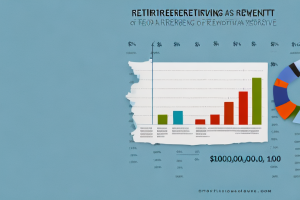Retirement savings are a critical aspect of financial planning for individuals as they enter their golden years. However, a significant concern is whether Americans are adequately prepared for this stage of life. One important milestone in retirement planning is reaching a savings goal of $100,000. This article aims to delve into the importance of retirement savings, explore the current state of retirement savings in the United States, and examine the factors that can impact Americans’ ability to accumulate $100,000 for retirement.
Understanding the importance of retirement savings
Retirement savings is vital for ensuring financial security and peace of mind during one’s retirement years. It provides a safety net to cover living expenses, healthcare costs, and other unforeseen expenditures. For many Americans, social security benefits may not be sufficient to maintain their desired standard of living in retirement. Thus, having personal savings becomes crucial to bridge the shortfall.
Moreover, retirement savings can also help individuals pursue their aspirations and travel or engage in hobbies without financial constraints. It offers the freedom to enjoy life after years of hard work and dedication.
Additionally, retirement savings can provide a sense of independence and autonomy. By having a substantial nest egg, individuals can rely less on others for financial support and maintain their financial independence. This can be especially important for those who do not have a strong support system or who prefer to maintain their autonomy in decision-making.
Furthermore, retirement savings can also serve as a legacy for future generations. By accumulating wealth over time, individuals can leave behind a financial inheritance for their loved ones. This can help support their children or grandchildren in achieving their own financial goals and aspirations, providing a lasting impact on their family’s financial well-being.
The financial reality of retirement for Americans
However, the reality is that a significant portion of Americans may not have adequate retirement savings. According to various studies and surveys, including those conducted by reputable financial institutions, a large number of Americans are falling short of their retirement savings goals.
The reasons behind this reality are multi-faceted. Factors such as stagnant wages, rising healthcare costs, and a lack of financial literacy contribute to the challenges individuals face in saving enough for retirement. Additionally, unexpected expenses, such as job loss or medical emergencies, can diminish retirement savings.
Exploring the current state of retirement savings in the United States
To gain a better understanding of the current state of retirement savings in the United States, it is important to analyze the available statistics. According to a survey conducted by the Federal Reserve, almost 40% of Americans do not have enough savings to cover a $400 emergency expense, let alone amass $100,000 for retirement.
Furthermore, the National Institute on Retirement Security conducted research indicating that the median retirement account balance across all working-age households is alarmingly low, hovering around $5,000. This signifies a significant gap between the retirement savings Americans have and what they need to secure a financially stable retirement.
Breaking down the statistics: How many Americans have $100,000 saved for retirement?
When it comes to having $100,000 saved for retirement, the statistics paint a concerning picture. A study conducted by the Employee Benefit Research Institute (EBRI) found that only 32% of American workers had saved $100,000 or more for retirement in 2020.
This means that roughly two-thirds of Americans do not have this amount saved, leaving them at risk of facing financial challenges during their retirement years. It is crucial to note that $100,000 is a reasonable savings goal for retirement, and falling short of this milestone can have significant consequences.
Factors affecting retirement savings in America
Several factors can impact Americans’ ability to accumulate $100,000 for retirement. One key factor is income levels. Individuals with higher incomes generally have more disposable income to set aside for retirement savings.
Another critical factor is access to employer-sponsored retirement plans. Those with access to such plans, like 401(k) or 403(b) accounts, can benefit from automatic payroll deductions and potential employer matching contributions, which help accelerate retirement savings growth. Unfortunately, not all Americans have access to these plans, particularly those working in small businesses or the gig economy.
Examining the age and income demographics of Americans with $100,000 for retirement
Age and income demographics also play a significant role in determining who has been able to accumulate $100,000 or more for retirement. Older individuals generally have had more time to save and benefit from compound interest, making it more likely for them to reach this savings milestone.
Furthermore, higher-income individuals have more financial resources at their disposal to dedicate towards retirement savings. However, it is important to note that even within these demographics, a substantial portion may still fall short of the $100,000 goal.
Comparing retirement savings across different states in America
Retirement savings vary significantly from state to state in America. Factors such as cost of living, income levels, and access to employer-sponsored retirement plans can contribute to these discrepancies.
States with a higher cost of living, like California and New York, may have higher retirement savings goals to maintain a comfortable lifestyle. Conversely, states with lower costs of living, like Mississippi and Arkansas, may have comparatively lower savings needs.
The impact of education and financial literacy on retirement savings
Education and financial literacy play a crucial role in individuals’ ability to save for retirement. Understanding the importance of retirement savings and having knowledge of investment options and strategies can help individuals make informed decisions.
Financial literacy programs and resources can empower individuals to navigate the complexities of retirement planning and increase their chances of reaching the $100,000 savings milestone.
Strategies to increase your retirement savings and reach the $100,000 milestone
For individuals who have not yet reached the $100,000 savings milestone for retirement, there are strategies that can help accelerate their savings growth:
- Start saving early: The power of compounding over time is invaluable. The earlier individuals begin saving, the more time their money has to grow.
- Maximize employer-sponsored retirement contributions: Take advantage of employer matching contributions whenever possible. These contributions can significantly boost retirement savings.
- Contribute to individual retirement accounts (IRAs): IRAs offer another avenue to save for retirement, providing tax advantages and flexibility in investment options.
- Reduce unnecessary expenses: Review monthly spending habits and identify areas where expenses can be minimized. Redirecting these savings towards retirement can make a substantial difference in the long run.
Exploring alternative options for retirement planning and financial security
Aside from traditional retirement savings accounts, alternative options can also contribute to individuals’ financial security in retirement. Options such as real estate investments, annuities, and other forms of passive income can supplement retirement savings and provide additional streams of cash flow.
However, it is essential to carefully evaluate the risks and benefits associated with these alternative options and seek professional advice to ensure they align with individuals’ unique financial goals and circumstances.
The role of employer-sponsored retirement plans in boosting savings rates
Employer-sponsored retirement plans, such as 401(k) and 403(b) accounts, can significantly contribute to boosting individuals’ retirement savings rates. The convenience of automatic contributions and potential employer matching contributions can accelerate savings growth.
Through disciplined contributions and the power of compound interest, individuals can steadily work towards achieving the $100,000 retirement savings goal.
Tips for maximizing your Social Security benefits in retirement
Social Security benefits play a significant role in many Americans’ retirement income. Maximize your Social Security benefits by considering the following tips:
- Delay claiming benefits: Delaying Social Security benefits beyond the full retirement age can increase benefit amounts.
- Coordinate benefits with your spouse: If married, explore strategies to optimize Social Security benefits for both spouses.
- Understand the claiming rules: Familiarize yourself with the different claiming options and rules to make informed choices.
Overcoming obstacles to saving for retirement: Debt, healthcare costs, and more
Obstacles such as debt and healthcare costs can hinder individuals’ ability to save for retirement. It is crucial to address these challenges proactively to protect retirement savings.
Prioritize paying off high-interest debt and consider strategies to manage healthcare costs effectively, such as exploring health savings accounts (HSAs) and evaluating insurance options. These steps can help individuals free up resources to allocate towards retirement savings.
Understanding the risks of not having $100,000 saved for retirement
Not having $100,000 saved for retirement can expose individuals to various risks:
- Insufficient funds for living expenses: Inadequate savings may result in a diminished quality of life or financial stress during retirement.
- Reliance on social security benefits: Relying solely on social security benefits may not provide the desired financial security or allow for the pursuit of personal aspirations.
- Inability to cover healthcare costs: Rising healthcare costs can burden those without sufficient retirement savings, impacting their ability to access quality healthcare.
Expert insights: Financial advisors’ perspectives on retirement savings in America
Financial advisors offer valuable insights into retirement savings and planning in America. Many emphasize the importance of starting early, taking advantage of employer-sponsored retirement plans, and seeking professional advice to create personalized retirement strategies that align with individual goals and risk tolerance.
The psychological factors influencing Americans’ saving habits for retirement
Psychological factors can heavily influence Americans’ saving habits for retirement. Cultural norms, societal pressure, and behavioral biases all play a role in determining individuals’ willingness and ability to save for retirement.
Understanding these factors can help individuals overcome psychological barriers and develop a positive savings mindset, increasing the likelihood of achieving their retirement savings goals.
Navigating market volatility: How it affects your retirement savings goals
Market volatility can significantly impact retirement savings goals. Fluctuations in investment returns can affect the growth of retirement accounts and potentially delay individuals’ progress towards the $100,000 milestone.
It is crucial to adopt a long-term perspective, diversify investments, and periodically review and rebalance investment portfolios. By staying informed and working with financial professionals, individuals can navigate market volatility and stay on track towards their retirement savings goals.
Exploring the impact of COVID-19 on Americans’ retirement savings prospects
The COVID-19 pandemic has brought with it unprecedented financial challenges. Many Americans have experienced job losses, pay cuts, and increased healthcare costs, all of which can have a detrimental impact on their retirement savings prospects.
However, it is essential to remain resilient and adapt to the changing circumstances. By revisiting financial plans, cutting unnecessary expenses, and exploring available relief options, individuals can mitigate the pandemic’s effects on their retirement savings.
Planning beyond $100,000: Setting realistic goals for a secure retirement
While reaching the $100,000 retirement savings milestone is significant, it is important to set realistic goals beyond this threshold for a secure retirement. Working with financial advisors can help individuals assess their specific financial situation, set achievable goals, and develop a comprehensive retirement plan tailored to their needs and aspirations.
Remember, retirement savings are a lifelong journey. Consistent effort, financial discipline, and seeking expert guidance can pave the way to a financially secure and fulfilling retirement.
In conclusion, the percentage of Americans who have $100,000 saved for retirement is relatively low. However, understanding the importance of retirement savings, exploring the current state of retirement savings in the United States, and examining the factors that impact Americans’ ability to accumulate this amount can empower individuals to take proactive steps towards achieving their retirement goals. By adopting strategies to increase savings, exploring alternative options, maximizing employer-sponsored retirement plans, and utilizing expert insights, Americans can work towards a financially secure future beyond the $100,000 milestone.



